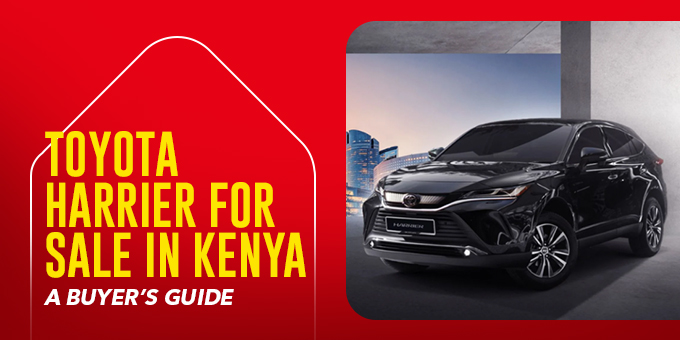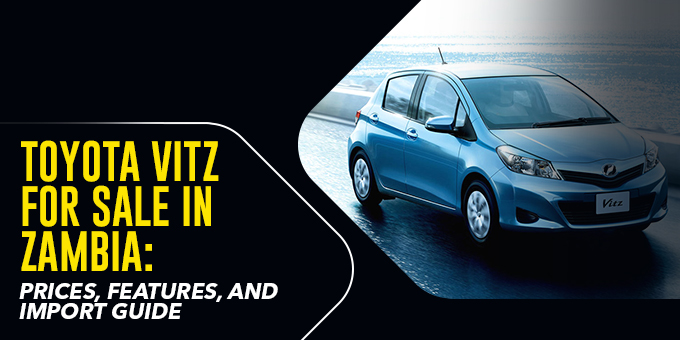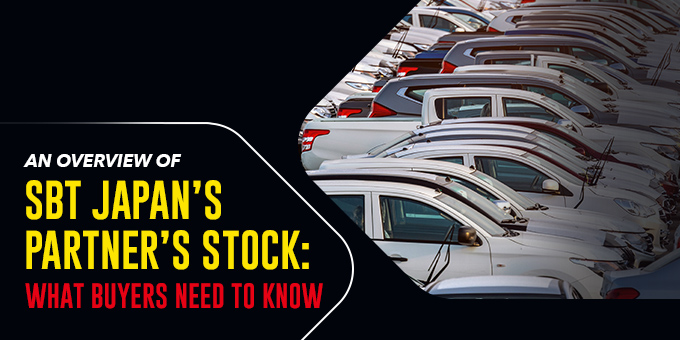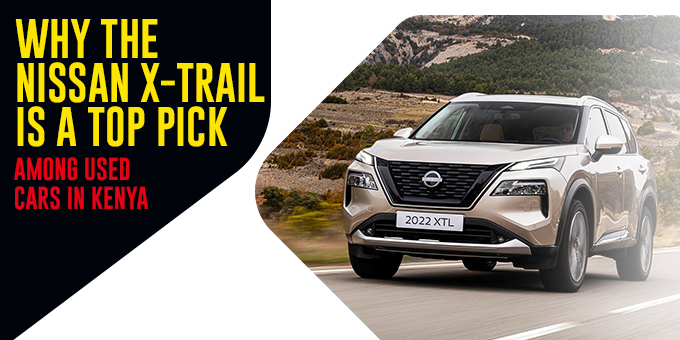If you’re shopping for a used SUV that feels upscale but won’t break the bank, the Toyota Harrier 2005 deserves serious attention. Popular across East Africa, the Harrier mixes Lexus-like comfort with Toyota dependability; consequently, it frequently appears on Kenyan used-car sites and in import listings. In this guide, we’ll walk you through everything a Kenyan buyer needs to know, from which engines to prefer to what to inspect before you hand over cash.
Quick Overview: Why Kenyans Love the Harrier
The Harrier is Toyota’s mid-size crossover that shared many mechanical bones with the Lexus RX in earlier generations. Now, let’s find out why it’s so well-loved. Firstly, it blends comfort, ride quality, and a slightly premium image, which makes it desirable for family drivers and executives alike.
Secondly, parts and servicing are relatively straightforward because many Harrier components are shared with other common Toyota models. Finally, whether you buy locally or import from Japan, a clean Harrier is usually easy to resell, and that liquidity matters when you’re buying used. Evidence of this demand appears in multiple Kenyan listings and import channels, so you’ll rarely be short of choices.
The 2005 Model at a Glance
The 2005 Harrier belongs to the second generation (XU30/MCU30 series). It was introduced in 2003 and produced through the late 2000s. Moreover, it commonly came with two mainstream petrol engine choices: a 2.4-litre 4-cylinder, and a 3.0-litre V6. In short, expect a mid-size, five-seat crossover that prioritizes comfort over sporty handling.
Engine & Performance: What to Choose and Why
Most 2005 Harriers you’ll see are either:
- 2.4L (inline-4): Typically more economical, and therefore a strong pick if fuel costs and running expenses concern you. However, some owners report oil-consumption issues on certain 2.4-litre variants, so inspection matters.
- 3.0L V6 (≈220 hp): Noticeably smoother and quicker, especially when fully loaded or on steep Kenyan hills; yet the V6 drinks more fuel and costs more to maintain.
- Performance Notes: Expect relaxed acceleration with the 2.4L and stronger pull with the V6. Additionally, the Harrier’s automatic transmission is generally durable but can develop jerky shifts if neglected. Therefore, test-driving and transmission health checks are non-negotiable.
- Fuel Economy (real world): Combined consumption for the second-generation Harrier typically sits around ~10–11 L/100 km (roughly 9–10 km/L) for the V6. Smaller engines can be a little more efficient in steady driving. Expect variation depending on service history and driving style.
Interior and Exterior: Comfort, Features, and Build Quality
Inside, the 2005 Harrier offers a pleasantly quiet cabin with reasonably good materials for its era. Leather seats, power seats, and a panoramic sunroof turn up on higher trims. Meanwhile, mid-range trims often include air-conditioning, cruise control, and an aftermarket or OEM audio/navigation setup. Externally, the Harrier presents a sleek, coupe-like roofline that still looks modern today, which explains part of its continued appeal.
When considering purchasing, verify that the sunroof and power windows work reliably (electrical gremlins show up on older cars), and check seat-frame and upholstery condition. If the vehicle has been in coastal Kenya, inspect for early signs of corrosion under the chassis and wheel arches.
Safety: What you should expect
The 2005 Harrier came equipped, in most trims, with core safety gear such as ABS and front airbags. Higher trims or later factory packages could add side airbags and stability aids. Therefore, don’t assume every Harrier has every safety item; always confirm which safety options the specific car carries.
Common Issues & Maintenance Tips
When buying any older Harrier, especially a 2005 model, pay attention to these commonly reported concerns:
- Oil Consumption (2AZ engines): Some 2.4-litre variants have been documented to have oil-burning tendencies; check service records and oil level history.
- Transmission Wear: Rough or delayed shifts often indicate neglected fluid/service, or a worn filter; insist on a smooth test drive and an oil sample, if possible.
- Suspension & Bushings: Older Harriers may need shock and bushing replacement; listen for knocks on rough roads.
- Electrical Items: Sunroof, power seats, and aftermarket accessories are common trouble spots; test them all.
- Cooling & Head Gasket Clues: Look for milky oil (indicating coolant contamination) and thoroughly test-drive temperature behavior.
Price Range and Where to Buy In Kenya
Prices vary by condition, mileage, and engine. In Kenya, 2005 Harriers commonly list for as low as USD 7,000 and as high as USD 50,000. These prices reflect used vehicles; those for new units can be higher. Therefore, set realistic expectations and compare multiple listings before committing. For quick searches, popular platforms include local classified sites and dealer listings. If you prefer a fresher car, consider importing one from Japan through reputable exporters like SBT Japan.
Practical Pre-Purchase Checklist (Do These before You Buy)
- Service History: Insist on maintenance receipts or a clear history.
- VIN/Chassis Check: Verify that the VIN matches the import documents and that there’s no salvage record.
- Compression & Oil Tests: Ask for a compression test and check for coolant in oil.
- Transmission Health: Evaluate shift quality on a long test drive; check fluid color and smell.
- Undercarriage Inspection: A ramp check for rust, frame damage, or welding.
- Electrical Function Test: Sunroof, windows, lights, central locking, and infotainment.
- Mechanic Inspection: Pay for a trusted mechanic to do a thorough check; this small cost often saves big headaches.
FAQs about the Toyota Harrier 2005 in Kenya
1. Is the Toyota Harrier 2005 fuel-efficient?
The 2.4L version is reasonably fuel-efficient for its size, averaging about 9–11 km/L in mixed driving. The 3.0L V6 consumes more fuel, closer to 7–9 km/L, but offers stronger performance.
2. Is the Toyota Harrier 2005 suitable for Kenyan roads?
Absolutely. The Harrier balances comfort on highways with enough ground clearance for rougher rural roads. While it isn’t an extreme off-roader like a Land Cruiser, it handles everyday Kenyan road conditions very well.
3. What is the difference between the Toyota Harrier and the Lexus RX?
The Harrier and Lexus RX share a platform and many components. However, the Harrier is Toyota-branded, often with fewer luxury features, while the RX is marketed as a premium Lexus product with more upscale trim and gadgets.
4. Is it expensive to maintain a Toyota Harrier 2005 in Kenya?
Not particularly. Many parts are shared with other Toyota models and are available in Kenya at fair prices. However, the V6 version may cost more to maintain due to higher fuel consumption and pricier parts.
5. Does the Toyota Harrier 2005 have good resale value in Kenya?
Yes, it does. Because of strong demand for used Harriers, resale is generally easy, provided the car is well-maintained and accident-free.
Final Verdict: Is A 2005 Harrier Right For You?
If you value a comfortable, premium-feeling SUV and can accept slightly higher running costs for a V6, the Harrier 2005 can be an excellent purchase, especially if you find one with a clean service history and a careful owner. Conversely, if fuel economy and low-maintenance running are your top priorities, choose a well-serviced 2.4L model and be especially vigilant about oil consumption and routine servicing.
In conclusion, buy carefully, inspect thoroughly, and buy the best-maintained example you can afford. Do that, and the Toyota Harrier 2005 will reward you with years of comfortable service on Kenyan roads.




